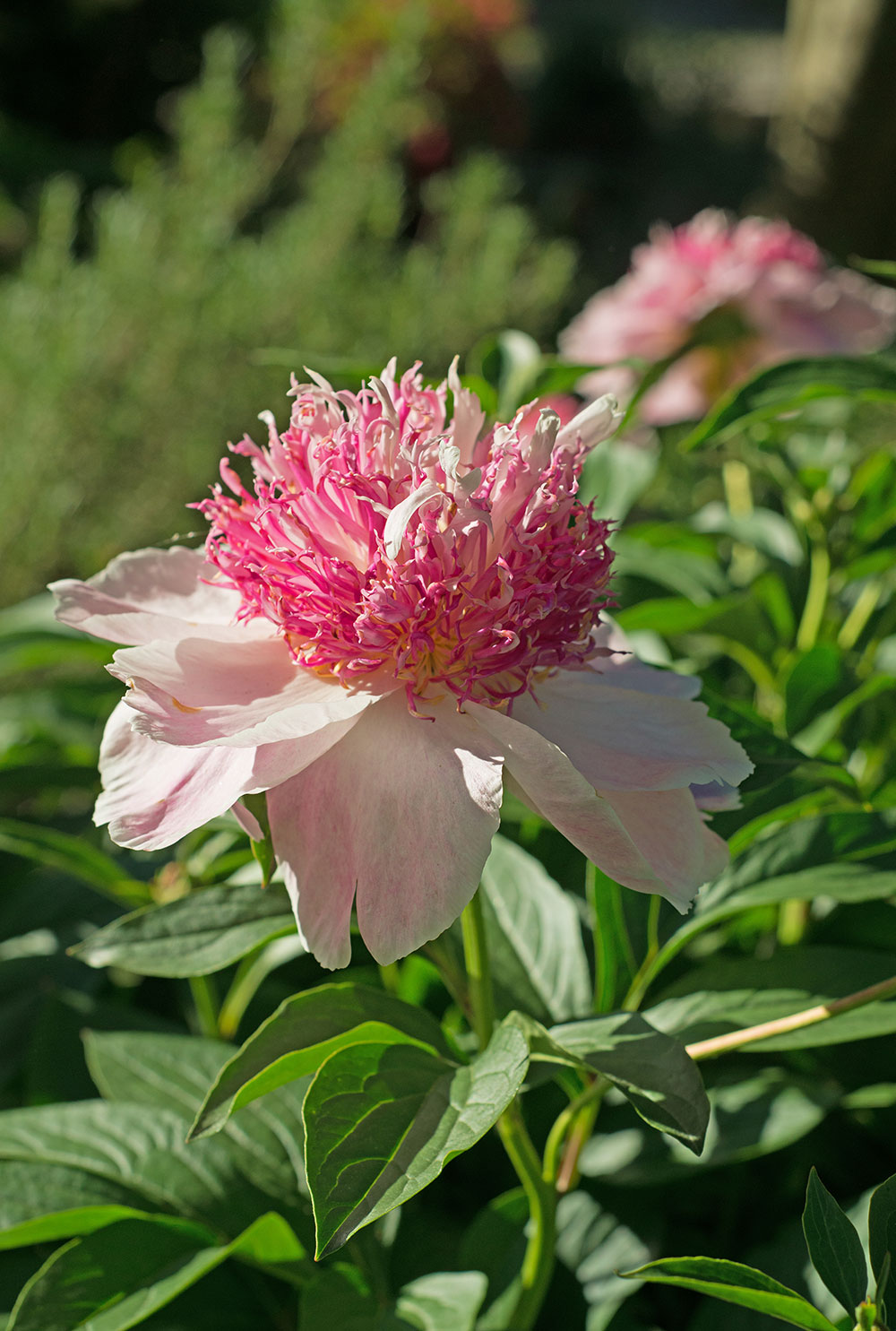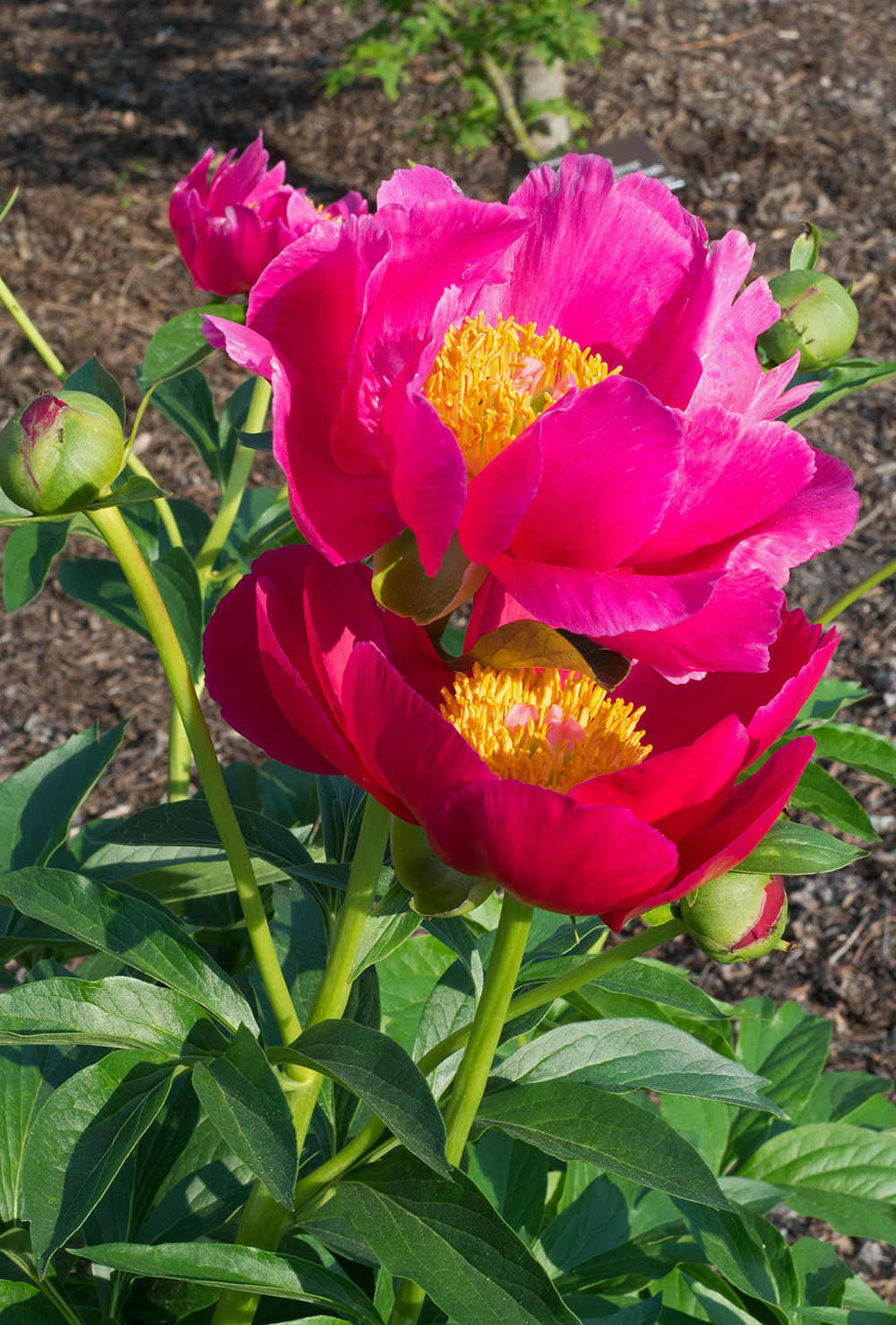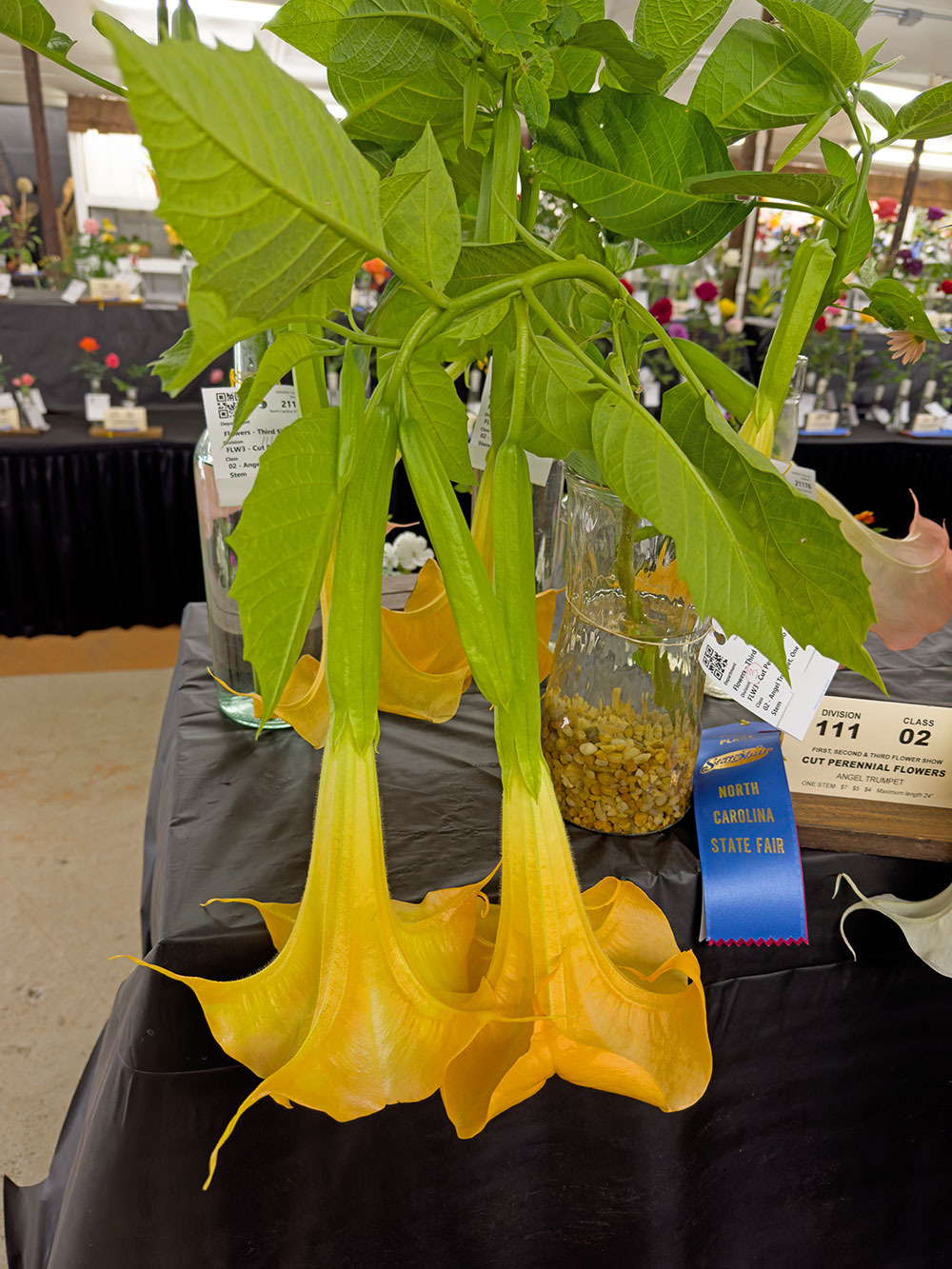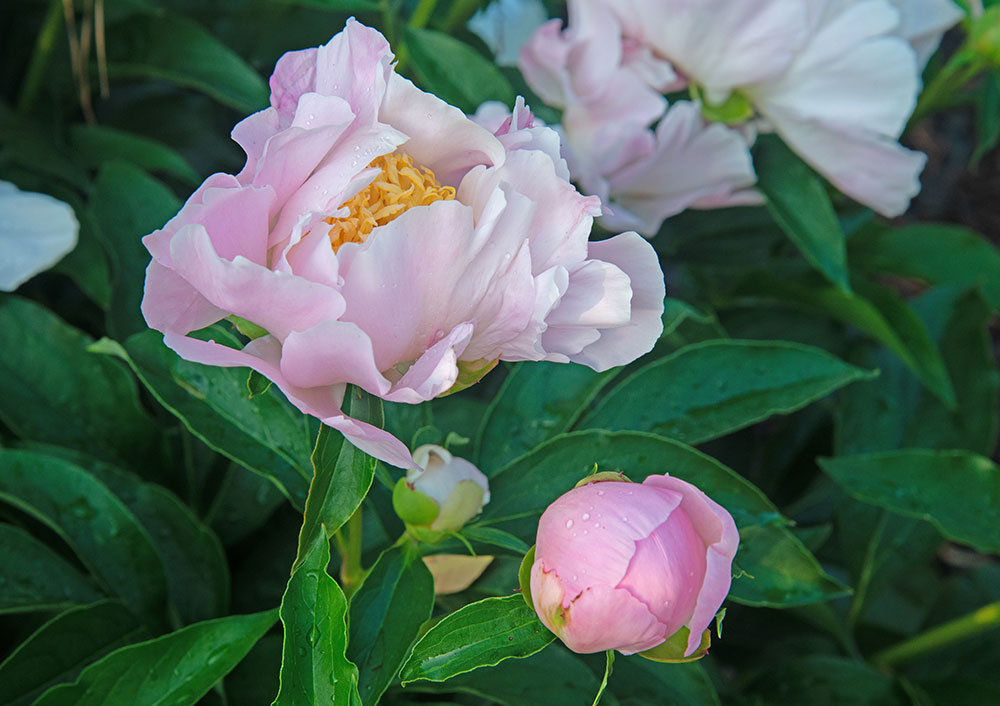This time of year, the poster child for patience is a potential backyard peony grower. That’s because many of the peonies now for sale come in the form of tubers, which can take a few years to mature enough to put on bodacious bloom shows in the spring. But, boy, are they worth the wait!

In the spring, ‘Do Tell’ looks swell.
The reason why peony tubers can be readily found now is that September is the prime time to plant them in our area. Actually, I prefer going with tubers now, as opposed to buying full-blown peony plants in the spring because they can struggle their first year in the garden if summertime weather dials up the heat and turns off the rain. Planted this month, tubers will spend now into next spring developing strong root systems capable of sustaining young peonies through their initial growing season and beyond.
Peony tubers can easily be found online, but I like picking my own out at local garden centers. For peonies (deer resistant, BTW) that will mature and become flowering showoffs in less time, I look for big, chubby tubers that have at least four to five pinkish “eyes.”
The best bloom production comes from peonies planted in areas that bask in morning light but are at least partially shaded from harsh afternoon sunrays. Dig a hole for each tuber about 18 inches wide and deep, mixing in a generous amount of compost or soil conditioner for proper drainage. The tops of the tubers should be no more than an inch below ground.

‘Scarlett O’Hara’ is dipped in dazzling red.
So which pretty peonies should you pick? In the South, it is better to go with selections that need minimal “chill hours” — professional grower speak for extended stretches of low winter temperatures.
Consider time-tested selections for Southern gardens, such as ‘Nymphe’ (introduced in 1913), flaunting fragrant, blushing pink blossoms; ‘Sarah Bernhardt’ (1906) with pleasing, double-pink flowers; ‘Festiva Maxima’ (1851), a perfumed, double-white charmer; or the raspberry dazzler ‘Felix Crousse’ (1881).
There are also plenty of newer cultivars to pick from, and this is where area garden centers can be a big help because, to keep customers happy, they certainly aren’t going to sell peonies that won’t perform well here. Some of the ones I’ve spotted locally include ‘Do Tell’ with light pink petals dancing around a deep rose puffball center; ‘Old Rose Dandy’ that displays a curious blend of purplish-pink with bright beige; ‘Scarlett O’Hara,’ a dazzling, deep red beauty; and ‘Garden Lace,’ a delicate pink pleasure for the eyes.
To Do in the Garden

Blue Angel — this angel trumpet cutting took home a blue ribbon from last year’s Flower and Garden competitions at the NC State Fair.
How did your garden do this year? If it grew well enough that you would love to tell the world — or at least the state — there is a way you can. The 2024 NC State Fair cranks up next month (October 17–27). Its Flower and Garden Exhibits include competitions for fruits, vegetables, flowers, floral arrangements, bonsai, and much more. There are plenty of blue ribbons up for grabs, so start babying some of your botanical best and check out the categories and rules at ncstatefair.org.
September
- As autumn settles into the veggie patch, it is a good time to plant such cool-season goodies as carrots, cabbage, broccoli, collards, Swiss chard, cauliflower, kale, lettuce, onions, mustard greens, radishes, turnips, and spinach.
- Winter is coming. No, not right now, but it is still close enough that you shouldn’t be pruning or fertilizing woody ornamentals because either chore can encourage new growth that probably won’t have a chance to harden off before the first frosts bite.
- I’m a cheap gardener, but I know when to pay more to get more. Such is the case for spring-blooming bulbs that will soon be showing up at local garden centers. “Bargain” bulbs typically won’t put on fantastic flower shows, but more expensive bulbs (which are usually larger) will dependably treat gardeners to grand springtime bloom-fests.
October
- Even as the harvest is wrapping up in the ’mater patch, there is still time early this month to plant such hardy cool-season veggies as Chinese cabbage, onions (bulbs), garlic, leaf lettuce (transplants), and spinach.
- Pansies! October is a prime planting month for these persistent winter pretties. Scratching in a little time-release fertilizer after your pansies are planted will help boost their flower power through the coldest months, as will dead-heading blooms when they begin to fade.
- Before herbaceous perennials die back or are pruned down at the end of the growing season, set markers beside them so they won’t be accidentally dug up during next spring’s planting frenzy.
- E-Bike Adventures
- Garden Adventurer: Peony Patience
- Erica Chats: Go Ahead and Spoil Them!
- Mulino Italian Kitchen & Bar
- Celebrated Spirits: Your Favorite Scarf
- Celebrated Spirits: Pub Ale
- Behind the Seams
- At Home with Amanda
- The Pet Parade 2024
- Out & About in Wake County: September/October 2024
- The Green Chair Project
- Pay It Forward: Habitat for Humanity of Wake County








